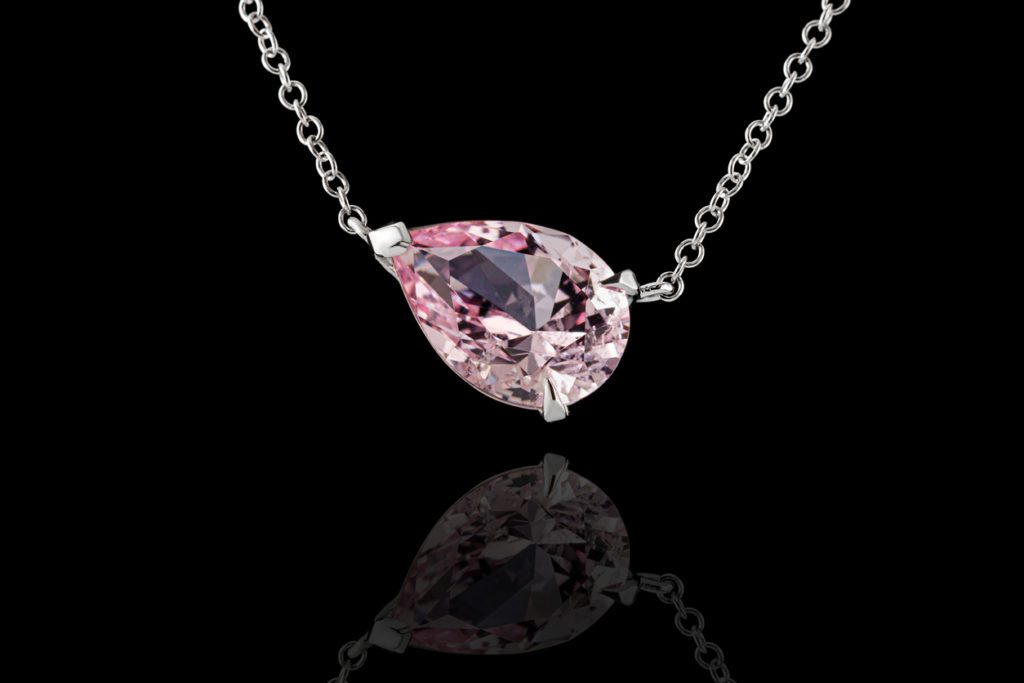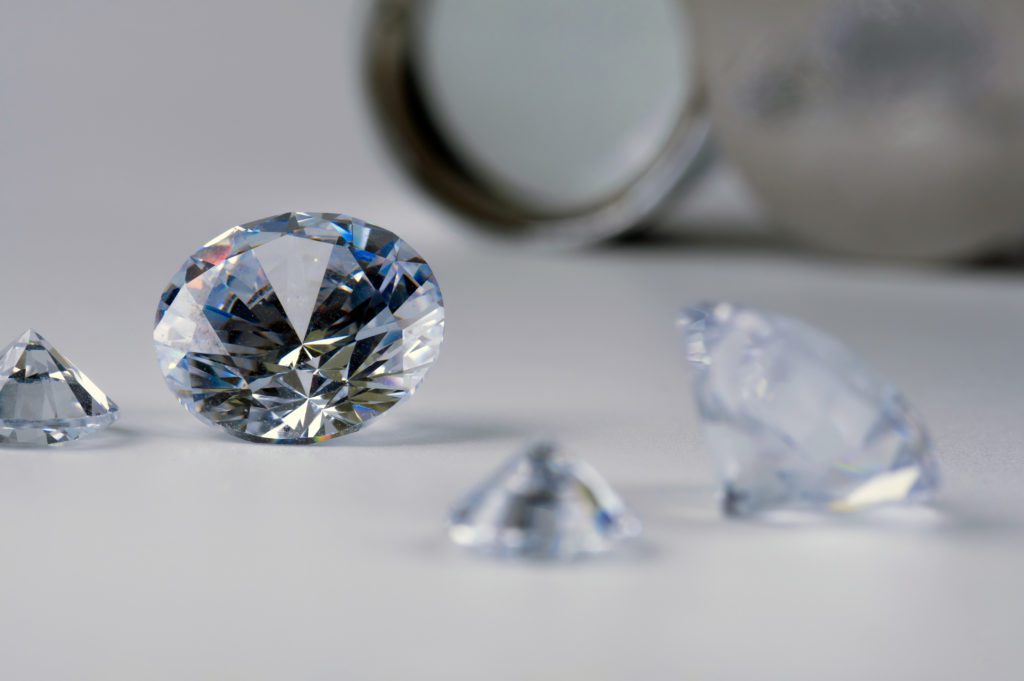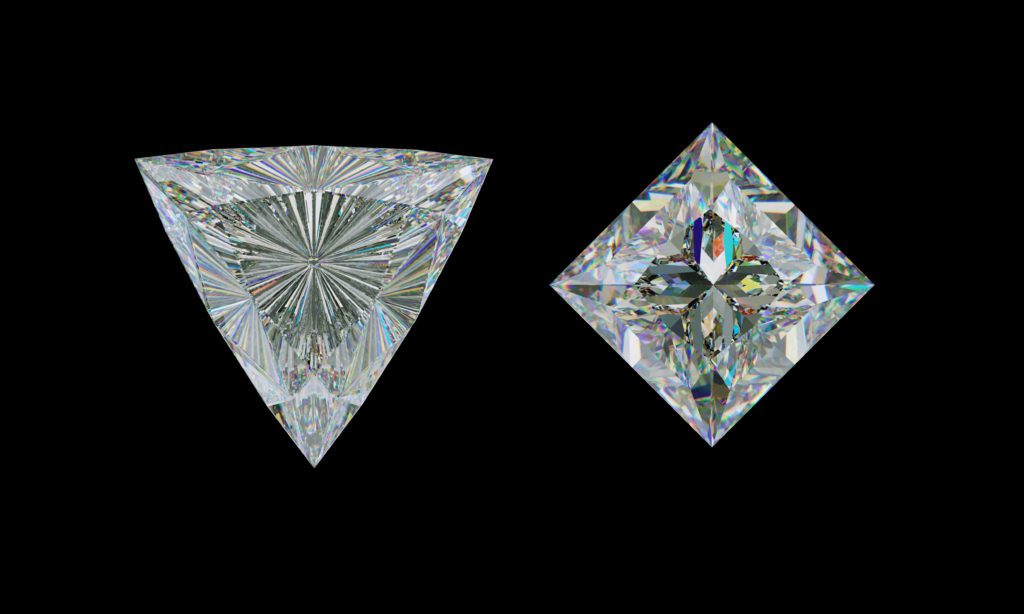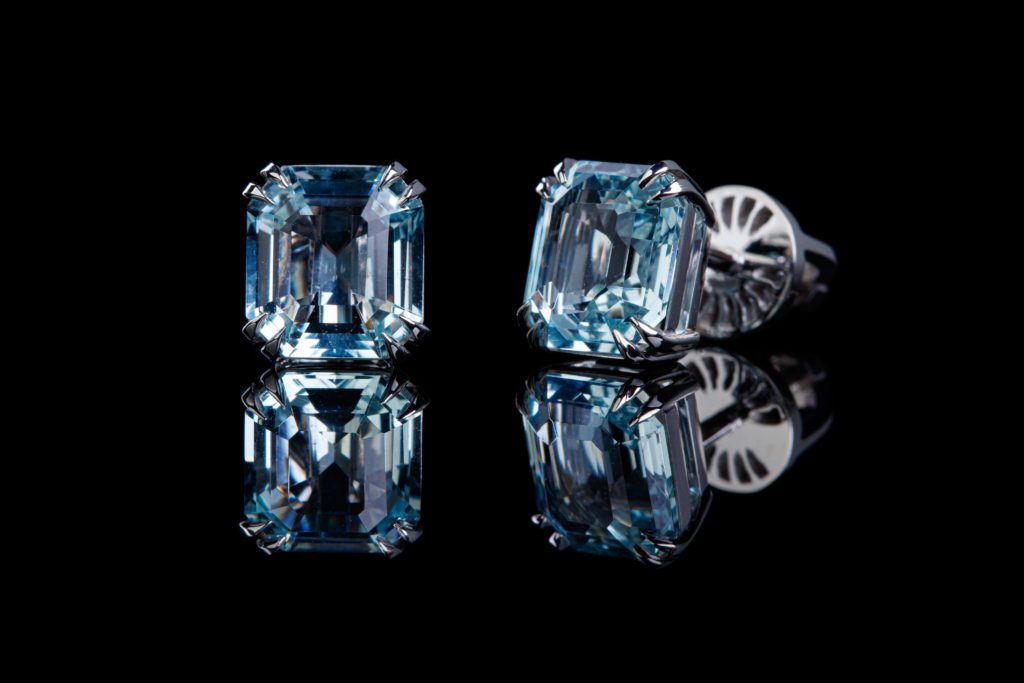The world of gemstones has long been associated with beauty, rarity, and extravagance. However, in recent years, an innovative transformation has taken place in the jewelry industry. Lab-grown diamonds and gemstones have emerged as a sustainable and ethical alternative to their natural counterparts. As technology advances, the range of gemstones that can be cultivated in a laboratory setting continues to expand. This blog will explore the fascinating world of lab-grown diamonds and gems, highlighting the types of gemstones that can be grown, advancements in technology, and the key differences in quality, size, strength, and value between lab-grown and natural gemstones.

Types of Lab-Grown Gemstones
Over the years, the list of gemstones that can be successfully grown in a laboratory has expanded significantly. While diamonds have garnered the most attention, other precious and semi-precious gemstones can now also be synthesized. The following gemstones can be created in a lab:
Diamonds: Lab-grown diamonds are perhaps the most well-known of the artificially created gemstones. They share the same chemical composition and crystal structure as natural diamonds, making them visually indistinguishable from their natural counterparts. Lab-grown diamonds can also come in various colors, such as pink, blue, and yellow.
Fancy Colored Diamonds: Apart from white diamonds, laboratories can create an array of fancy colored diamonds, including pink, blue, and green. These gems are highly sought after for their vibrant and unique hues.
Sapphires: Lab-grown sapphires are chemically identical to their natural counterparts. They are available in various colors, with blue sapphires being the most popular.
Rubies: Lab-grown rubies share the same mineral composition as natural rubies and exhibit the same rich red color.
Spinel: Spinel is a lesser-known but beautiful gemstone that can also be grown in a lab. It comes in a variety of colors, including red, blue, and purple.
Emeralds: While natural emeralds are known for their vibrant green color, lab-grown emeralds offer a sustainable alternative that is visually identical to the natural gems.
Alexandrite: This color-changing gemstone can be grown in a lab, displaying mesmerizing hues ranging from green in natural light to red under incandescent light.
Moissanite: While not a natural gemstone, moissanite is often used as an alternative to diamonds due to its brilliant sparkle and durability. It is entirely lab-grown and is a popular choice for engagement rings.
Opal: Lab-grown opals are known for their striking play-of-color and are a popular choice for jewelry designers and collectors.

Advancements in Lab-Grown Gemstone Technology
The field of lab-grown gemstones is constantly evolving, with rapid advances in technology expanding the possibilities for creating high-quality gems. Even within the last five years, significant progress has been made in the methods used to grow colored gemstones.
CVD (Chemical Vapor Deposition) for Diamonds: The CVD process has become increasingly popular for growing diamonds. It involves using a diamond seed and a carbon-rich gas, allowing the diamond to slowly crystallize layer by layer. This method has led to the production of high-quality, affordable lab-grown diamonds.
HPHT (High-Pressure High-Temperature) for Fancy Colored Diamonds: HPHT technology is employed to create fancy colored diamonds. By introducing specific trace elements during the growth process, lab-grown diamonds can exhibit a wide range of colors, including vivid blues, pinks, and yellows.
Flux Growth for Colored Gemstones: Flux growth is a method used to grow colored gemstones like sapphires, rubies, and emeralds. It involves dissolving aluminum oxide and adding trace elements to create the desired color. This technique has led to the development of stunning lab-grown colored gemstones that rival their natural counterparts.
Continuous Advancements in Quality Control: Laboratory techniques and equipment for quality control have improved significantly. Gemologists and technicians now have better tools for assessing the quality and authenticity of lab-grown gemstones, ensuring that they meet industry standards.
Comparing Lab-Grown vs. Natural Gemstones
To better understand the differences between lab-grown and natural gemstones, let’s explore several key aspects: quality, size, strength, and value.
Quality:
- Lab-Grown: Lab-grown gemstones are created under controlled conditions, which often result in gems with fewer inclusions and blemishes. They can be nearly flawless and possess exceptional color and clarity.
- Natural: Natural gemstones can vary widely in terms of quality, with inclusions, impurities, and uneven color distribution. They often require treatments to enhance their appearance.
Size:
- Lab-Grown: Lab-grown gemstones can be created in larger sizes more consistently. This is especially advantageous for jewelry designers looking for larger stones without the premium associated with large natural gems.
- Natural: Large, high-quality natural gemstones are exceptionally rare and come at a substantial cost.
Strength:
- Lab-Grown: Lab-grown gemstones, including diamonds, are renowned for their durability and hardness. They are less prone to chipping or breaking compared to some natural gemstones.
- Natural: Natural gemstones vary in terms of hardness and may require special care to avoid damage.
Value:
- Lab-Grown: Lab-grown gemstones are generally more affordable than their natural counterparts, offering an excellent value proposition for consumers who seek the beauty of gemstones without the high price tag.
- Natural: Natural gemstones can command higher prices due to their rarity, historical significance, and demand from collectors and connoisseurs.
Chart: Differences in Quality, Size, Strength, and Value
| Aspect | Lab-Grown Gemstones | Natural Gemstones |
|---|---|---|
| Quality | – Fewer inclusions and blemishes | – Varies widely in quality |
| – Exceptional color and clarity | – Often require treatments for enhancement | |
| Size | – Consistently available in larger sizes | – Large, high-quality gems are rare and costly |
| Strength | – High durability and hardness | – Varies in hardness and may require special care |
| Value | – More affordable | – Command higher prices due to rarity and demand |

The Ethical and Environmental Benefits
Lab-grown diamonds and gemstones have gained popularity not only for their quality and affordability, but also for their ethical and environmental advantages. These gems are often referred to as “conflict-free” because they are not associated with the social and environmental issues that can be connected to the mining of natural gems.
Ethical Sourcing: Natural gemstone mining can sometimes involve unethical practices, including labor exploitation and funding of armed conflicts in certain regions. Lab-grown gemstones, on the other hand, are produced without these ethical concerns. Consumers can have peace of mind knowing that their jewelry does not support such practices.
Environmental Sustainability: Traditional mining can have a significant impact on the environment. It can lead to deforestation, habitat destruction, and the release of harmful pollutants into the ecosystem. In contrast, lab-grown gemstones have a much lower environmental footprint. The controlled laboratory conditions minimize these negative effects, making them a more sustainable choice.
Reduced Energy Consumption: The process of growing gemstones in a lab requires less energy compared to the extraction and transportation of natural gemstones. Furthermore, advancements in energy-efficient technologies have made lab-grown gem production even more eco-friendly.

Customization and Innovation
One of the remarkable aspects of lab-grown gemstones is the level of customization and innovation they enable. Jewelry designers and manufacturers can create unique and intricate pieces using these lab-grown gems. Here are some key benefits:
Consistency: Lab-grown gemstones are more consistent in quality and appearance, making them ideal for creating matching sets and uniform designs. Designers can rely on the consistent color and clarity of these gems to create aesthetically pleasing jewelry.
Complex Shapes: The controlled growth process allows the creation of complex and custom shapes that might be challenging or costly to obtain with natural gemstones. This opens up new design possibilities and encourages artistic expression.
Affordability for Larger Pieces: Lab-grown gemstones make it more cost-effective to create jewelry with larger stones. This means consumers can enjoy the grandeur of substantial gems without the exorbitant price tags associated with large natural gemstones.
Innovation in Jewelry Design: The availability of affordable, high-quality lab-grown gemstones has inspired jewelry designers to experiment with new concepts and push the boundaries of traditional jewelry design. This has resulted in stunning and innovative pieces that cater to evolving consumer tastes.

Consumer Confidence
The jewelry industry has witnessed a growing acceptance of lab-grown gemstones among consumers. While the preference for natural gemstones remains, lab-grown alternatives are gaining traction, especially among younger generations. Several factors contribute to this shift in consumer sentiment:
Transparency: The jewelry industry has made significant efforts to be transparent about the origin and nature of gemstones. Many reputable retailers clearly label their jewelry to indicate whether the gemstones are natural or lab-grown. This transparency fosters trust among consumers.
Educational Resources: With the availability of online information, consumers can now easily educate themselves about the benefits and characteristics of lab-grown gemstones. They can make informed choices based on their preferences and values.
Affordability: As previously mentioned, lab-grown gemstones are often more affordable than natural ones. This cost advantage appeals to budget-conscious consumers who still want to own beautiful and valuable jewelry.
Cultural Shifts: The concept of luxury is evolving, and many consumers are embracing the idea that beauty and value can be found in lab-grown gemstones just as much as in natural gems. As sustainability and ethical considerations gain prominence, these lab-grown options align with modern values.

The Role of Trusted Jewelry Establishments
In the ever-evolving landscape of jewelry retail, trusted establishments play a pivotal role in shaping consumer confidence and choice. R&J Jewelry in San Jose, CA, is a shining example of such an establishment. With a reputation built on trust and quality, R&J Jewelry is a trusted pawnshop that sells quality pre-owned jewelry, allowing customers to acquire exquisite pieces of jewelry at a fraction of the cost.
R&J Jewelry understands the needs and desires of its discerning customers, offering a curated collection of pre-owned jewelry that meets the highest standards of quality and craftsmanship. Here’s why R&J Jewelry is a beacon in the world of jewelry retail:
-
Quality Assurance: Each piece of pre-owned jewelry at R&J Jewelry undergoes rigorous inspection and certification. The experienced team ensures every item is authentic and in impeccable condition, guaranteeing customer satisfaction.
-
Affordability: By offering pre-owned jewelry, R&J Jewelry allows customers to access high-quality pieces that might otherwise be out of reach. The affordability of these items makes luxury and elegance attainable for a broader audience.
-
Transparency: Transparency is at the core of R&J Jewelry’s values. Customers can trust that they are purchasing jewelry with a clear history and provenance, providing peace of mind and confidence in their choice.
-
Diverse Selection: R&J Jewelry offers a diverse range of pre-owned jewelry, catering to various tastes and preferences. Whether customers are looking for classic designs or unique, one-of-a-kind pieces, the collection has something for everyone.
-
Sustainability: By investing in pre-owned jewelry, customers contribute to sustainability by extending the lifespan of these exquisite pieces. This aligns with the growing awareness of environmental responsibility and ethical consumerism.
The world of lab-grown diamonds and gemstones offers a promising and sustainable future for the jewelry industry. With the ability to create a wide variety of precious and semi-precious gemstones, advancements in technology, and the advantages of quality, size, strength, value, and ethical sourcing, lab-grown gems have become a compelling choice for both consumers and jewelry designers.
As technology continues to evolve, the boundaries of what can be achieved in the world of lab-grown gemstones will expand even further. With the potential for new discoveries and innovative growth methods, lab-grown gemstones are likely to continue to gain popularity, offering a brilliant and ethical alternative to their natural counterparts. Whether it’s the allure of lab-grown diamonds, the appeal of sustainability, the affordability of pre-owned jewelry, or the opportunity for creative innovation, lab-grown diamonds and gemstones offer a world of possibilities for both consumers and the jewelry industry.
In summary, the growth of lab-grown diamonds and gemstones, coupled with trusted establishments like R&J Jewelry, offers a fascinating glimpse into the future of the jewelry industry. With their expanding range of available gemstones, ongoing technological advancements, and numerous benefits, these lab-grown gems are poised to become a significant player in the world of luxury and sustainable jewelry. Whether you’re drawn to the ethical advantages, environmental benefits, affordability of pre-owned jewelry, or the opportunity for creative innovation, lab-grown diamonds and gemstones have something to offer everyone in the world of jewelry.
